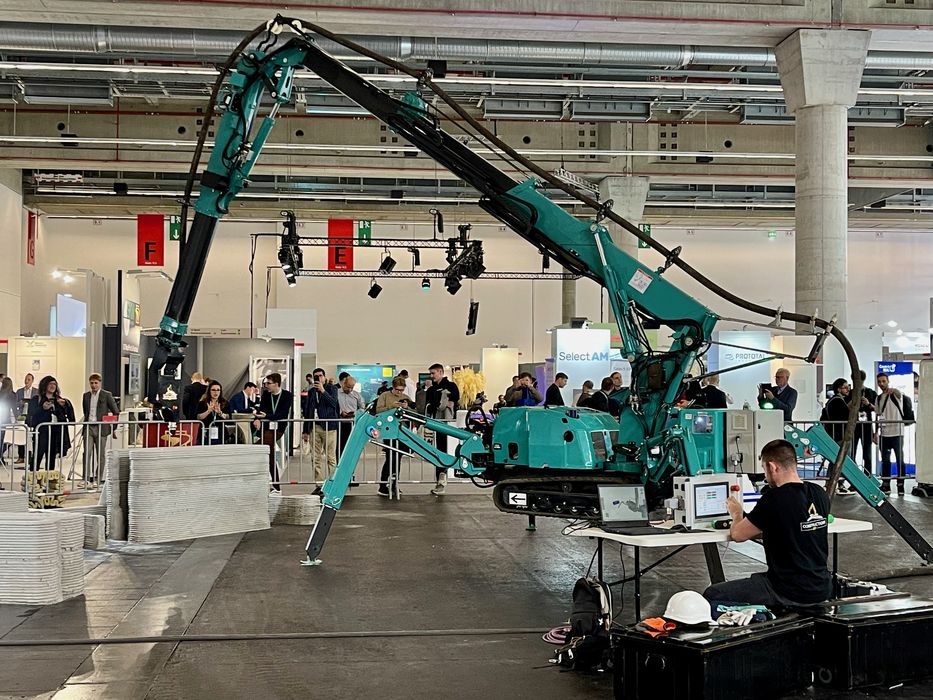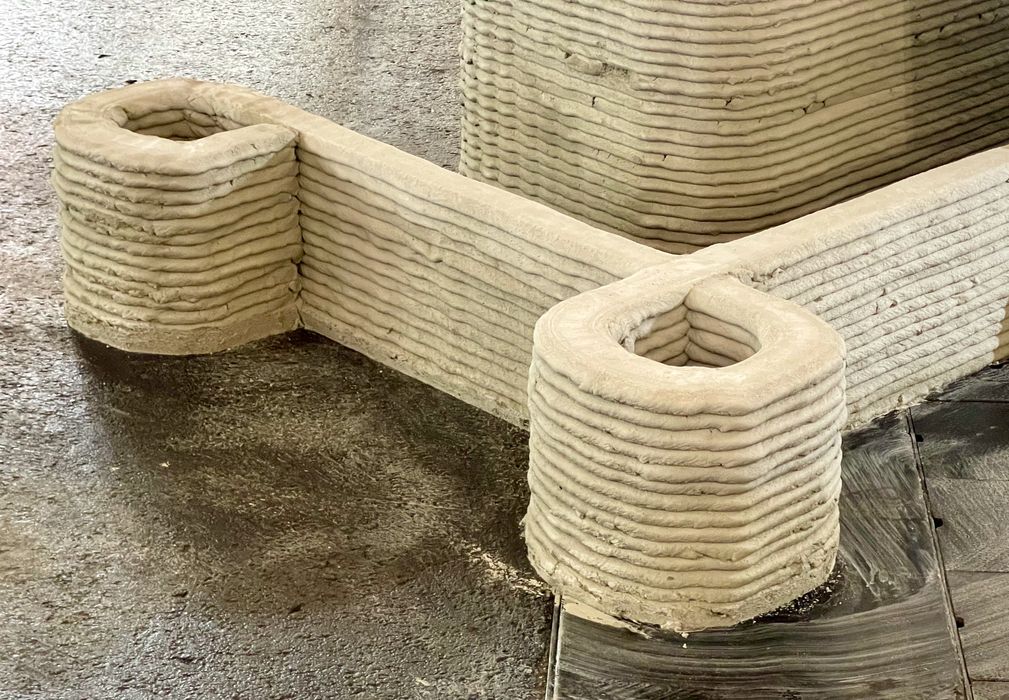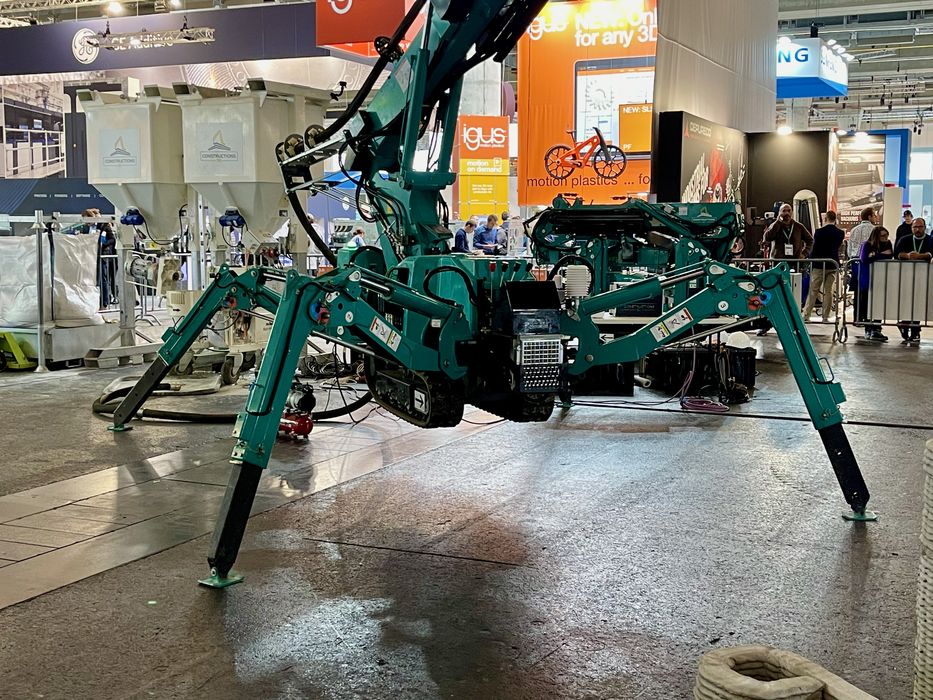
We had a look at the huge MaxiPrinter from Constructions 3D.
Constructions 3D is a French company and one of the few in the construction 3D printer business. This segment involves extrusion of concrete to build large structures, including whole buildings. Note that only the concrete is 3D printed, while the remainder of the building projects always use traditional trades to complete the work.
Constructions 3D is a spinoff of Machines 3D. Back in 2015 the company began developing concrete extrusion technology, and in 2017 spun off a new entity, Constructions 3D, to market the products.
They produce several types of concrete and mortar 3D printers, but the flagship device has to be the huge MaxiPrinter.
It’s a robotic device that has a concrete extrusion toolhead on the end of the robot arm. This allows the device to print structures outdoors within the reach radius of the robot, which is quite large, as you can see in the images.

The concrete is extruded layer by layer, in much the same fashion as FFF. However, as concrete is a rather slumpy material, overhangs are not really possible.
What’s quite interesting is the business approach by Constructions 3D. They’ve designed the MaxiPrinter to be stored and shipped within a standard shipping container.
If you look closely at the images, you will see that the printer has caterpillar tracks to move about, but when printing it extends legs to fix its position.

This configuration makes it quite rapid to set up. By contrast, some competing construction 3D printers are large building-sized gantry affairs, which must be tediously built around the build site before printing can commence. Meanwhile, we were told the MaxiPrinter can be printing only 2.5 hours after the shipping container is cracked open.
Another interesting difference is the number of people required to operate the system. The MaxiPrinter requires only one person to operate, it, while other systems require two or more. That makes is much more inexpensive to operate.
This is where it gets even more interesting. I asked about the customers for the MaxiPrinter: who is buying it? I assumed it would be large construction companies that would use it as another building tool in their arsenal.
The Constructions 3D rep said, “we thought that too at first”. But it turns out those companies are NOT the customer.
Large construction companies tend to rent equipment for big projects, and when the projects complete, the equipment goes away. These companies are also looking for ways to beef up the size of the contracts, and are less inclined to use equipment that saves labor: that would reduce the work to mark up on the invoices!
Instead Constructions 3D explained that it seems their customers tend to be smaller organizations that want to be “free” from the big construction firms. By providing the MaxiPrinter with its ability to be operated by a single person, they are quite attractive to that market.
They’ve found customers will purchase the equipment and then use it for specific niche construction projects. For example, one of their clients uses the MaxiPrinter to print fire safe data centers for clients — which makes sense as the concrete doesn’t burn. Apparently they’ve even printed internal data centers inside of existing buildings, something I would never have considered.
Finally, I asked about the problem of cold joints in construction 3D printing, which we explored earlier in a discussion with an actual concrete worker.
The issue with cold joints is that concrete won’t set properly in colder weather because the layers won’t adhere correctly. I wondered whether Constructions 3D had considered this and if there is a solution.
They said that in fact they have had two kinds of temperature problems: too hot AND too cold. Some of their projects have been in hot environments, which initially caused difficulties in extrusion. However, through the use of special additives, they were able to overcome the heat issue. As for cold, they are apparently working on that and they expect to have a solution in the future.
There probably are not that many Fabbaloo readers using construction 3D printers, but the MaxiPrinter is surely one of the more interesting options.
Via Constructions 3D
